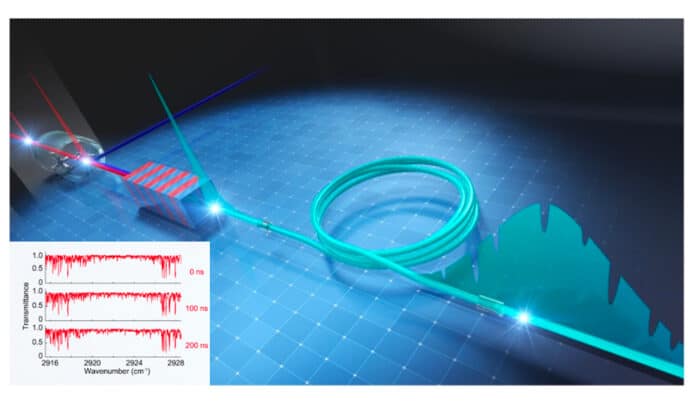Infrared spectroscopy is a non-intrusive method for identifying unknown samples and recognized chemical compounds. It is predicated on how various molecules respond to infrared light. This device may have been used at airports to check for illegal narcotics. Liquid biopsy, environmental gas monitoring, contaminant identification, forensic analysis, exoplanet search, etc., are a few of the various uses for the method.
Yet, the data produced by conventional infrared spectroscopy methods is of low (temporal) resolution. Because spectral data collecting is a time-consuming operation, they are often only used for static samples. Several quick measurements are needed to detect phenomena that change quickly.
The University of Tokyo’s Prof. Ideguchi and his team have made it possible to acquire high-speed and high-resolution spectral data. The group discovered upconversion time-stretch infrared spectroscopy (UC-TSIR), which can collect 10 million spectra per second of infrared data and measure spectra with 1000 spectral elements.
Due to the fact that the devices operate in the infrared region, where optical technology is currently constrained, conventional time-stretch infrared spectroscopy data has fewer observable spectral elements (~30).
Dr. Hashimoto said, “UC-TSIR breaks the limit by converting infrared pulses containing molecular vibration information into near-infrared pulses with wavelength conversion techniques (upconversion) and temporally stretching and detecting the pulses in the near-infrared region.”
“Compared to conventional methods, UC-TSIR provides over 30-fold more spectral elements and 400 times better spectral resolution. The UC-TSIR can trace high-speed phenomena such as the combustion of gaseous molecules and irreversible chemical reactions of biomolecules at a high temporal resolution.”
“In theory, the concept sounds simple and easy to implement; but it was far from that. We carefully selected optical elements and adjusted the parameters through trial and error. Even after building the setup, we dealt with various spectral distortions caused by unwanted nonlinear optical effects and insufficient time stretching. After dealing with those issues, we were overjoyed when we finally saw clear infrared absorption spectra.”
“Nanosecond- or microsecond-scale ultra-fast continuous infrared spectral measurements by UC-TSIR can solve problems unresolved by conventional spectroscopy methods.”
Journal Reference:
- Hashimoto, K., Nakamura, T., Kageyama, T. et al. Upconversion time-stretches infrared spectroscopy. Light Sci Appl 12, 48 (2023). DOI: 10.1038/s41377-023-01096-4
